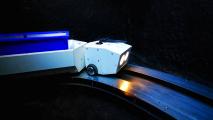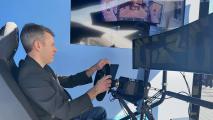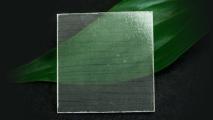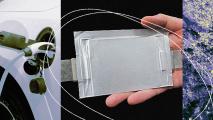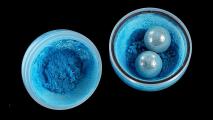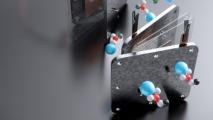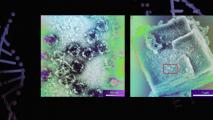
Materials
Though we live in a digital age, material science has shaped history—and it’s far from over. From quantum computers to fusion reactors, breakthroughs in materials will drive the next technological frontier.
More
Microsoft AI discovers 18 new battery materials in two weeks
Using AI and cloud computing, Microsoft was able to quickly identify 18 promising battery materials for the Department of Energy.
Are modern cars keeping us safe, or invading our privacy? Or both?
Modern cars have cameras to track your speed, your lane position, and if you’re distracted, all in the name of safety. What about privacy?
A real apartment complex was built like a LEGO set
Renco, a system combining LEGO-like blocks and color-coded building plans, could be the future of construction.
Autonomous tech is taking over last-mile delivery
Autonomous robots, drones, and even underground tunnels could be the standard for last-mile delivery in the future.
We test drove BMW’s life-sized remote-controlled car
BMW revealed a remote-controlled car concept at CES 2024. Currently positioned as a remote valet concept, the potential extends much further.
Ever-larger cars and trucks are causing a safety crisis on US streets
Deadly traffic incidents have declined in most developed countries in recent years. But in the U.S. they’re becoming more common.
Gallium: The liquid metal that could transform soft electronics
By harnessing the unusual properties of a liquid metal called gallium, scientists could create a new generation of flexible devices.
Mercedes-Benz adds special blue lights when its self-driving cars are “on”
Mercedes-Benz has added turquoise lights to its self-driving vehicles to indicate when its autonomous driving system is engaged.
Why scientists are making transparent wood
Stronger than plastic and tougher than glass, the transparent wood is being exploited for smartphone screens, insulated windows, and more
Toshiba unveils new fast-charging, cobalt-free battery
Toshiba has developed a new kind of cobalt-free battery that could lead to cheaper, more sustainable EVs in the future.
Green shipping picks up speed
The shipping industry aims to get to net-zero emissions by 2050. Can novel fuels, wind power and coordination on a global scale get it there?
Grinding scientists: Mechanochemistry could revolutionize the creation of new materials
Like a kitchen mortar and pestle, mechanochemistry harnesses ball milling to create chemical compounds, simpler, and faster than traditional methods.
Soap bubble discovery could lead to better EV batteries
A connection between soap bubbles and lithium-metal batteries could get them out of the lab and into our electric vehicles (EVs).
MIT physicists turn pencil lead into “gold”
MIT physicists have metaphorically turned graphite, or pencil lead, into gold by isolating five ultrathin flakes.
Engineers develop an efficient process to make fuel from carbon dioxide
MIT engineers developed a process that directly converts carbon dioxide into formate, a solid fuel that can be stored indefinitely.
You win this street game by getting “hit” by a self-driving car
A game that challenges pedestrians to avoid detection by an AI could help train tomorrow’s self-driving cars.
Biggest aircraft since the Hindenburg cleared for test flights
Pathfinder-1, a massive airship developed by Google cofounder Sergey Brin’s LTA Research, has begun flight testing.
Waze will now tell you if a road has a history of car accidents
Navigation app Waze’s new Crash History Alerts let drivers know when they’re approaching an area prone to car accidents.
“Iron Man” material made from DNA and glass is 4x stronger than steel
Using only DNA and glass, researchers made a material four times stronger and five times lighter than steel. It was inspired by Iron Man.
From a five-layer graphene sandwich, a rare electronic state emerges
When stacked in layers in a rhombohedral pattern, graphene takes on a rare state that could advance powerful magnetic memory devices.
Get inspired with the most innovative stories shaping the world around us.






